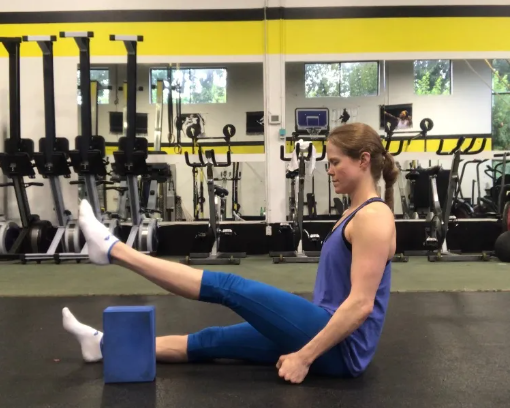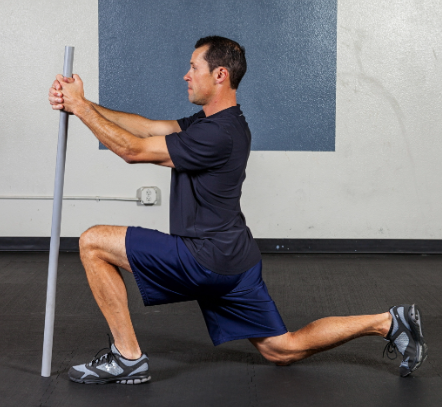Introduction
Hip flexor pain is a prevalent issue among athletes, significantly affecting performance and daily activities. As a Doctor of Physical Therapy, this guide focuses on the prevention and treatment of hip flexor pain to ensure athletes maintain peak performance levels.
Understanding Hip Flexor Pain
Causes in Athletes
Hip flexor pain often stems from strain or injury to the muscles that lift the knee toward the torso. Common causes include overuse, inadequate warm-ups, or direct trauma. Athletes in sports that demand quick starts, stops, or agile movements are especially susceptible.
Symptoms
Common symptoms include:
- Pain in the front of the hip or groin area
- Stiffness after periods of inactivity
- Challenges in activities involving knee elevation
Prevention Tips
Proper Warm-Up
Initiate every activity with comprehensive warm-ups, emphasizing dynamic stretches to enhance blood flow to the hip flexors.
Strength Training
Strengthen the hip flexors and adjacent muscles, such as the abdominals and lower back, to bolster stability and diminish injury risk.
Flexibility Exercises
Regular flexibility routines can prevent the muscle tightness that frequently leads to hip flexor pain.
Gradual Intensity Increase
Avoid abrupt increases in exercise intensity or duration to allow your body adequate adjustment time.
Effective Treatment Options
Physical Therapy for Hip Flexor Pain
Physical therapy is a cornerstone in treating hip flexor pain, recognized for its effectiveness in both alleviating immediate discomfort and providing long-term solutions to prevent recurrence. The treatment protocol typically includes a combination of strengthening exercises, flexibility routines, manual therapy, and patient education—all tailored to the individual’s specific needs.
Strengthening Exercises
Research indicates that strengthening the muscles surrounding the hip flexor, particularly the core and the lower limb muscles, plays a critical role in stabilizing the hip joint and alleviating stress on the hip flexors. Specific exercises such as leg lifts, bridging, and resistance training can significantly improve muscle function and reduce pain. A study published in the Journal of Orthopaedic & Sports Physical Therapy highlights the efficacy of targeted strength training in enhancing the stability and mobility of the hip joint, thus reducing the load and strain on the hip flexors.
Flexibility and Mobility Work
Flexibility exercises are equally crucial as they help to maintain or improve the range of motion of the hip joint. Techniques like static stretching, dynamic stretching, and proprioceptive neuromuscular facilitation (PNF) have been shown to be effective in increasing muscle length and reducing stiffness, which can help alleviate pain symptoms. A systematic review in the Physical Therapy Journal concluded that regular flexibility exercises could significantly reduce pain and enhance the functional capabilities of individuals with hip flexor issues.
Manual Therapy
Manual therapy techniques, including soft tissue mobilization, deep tissue massage, and joint mobilization, are used to reduce pain, increase joint mobility, and improve circulation to the affected areas. Evidence supports manual therapy as a beneficial adjunct to other physical therapy interventions for treating hip flexor pain. According to research findings published in the Manual Therapy Journal, manual therapy not only helps in reducing pain intensity but also aids in improving overall hip function and mobility.
Evidence-Based Treatment Planning
Physical therapists utilize an evidence-based approach to develop comprehensive treatment plans that address both the symptoms and underlying causes of hip flexor pain. This approach ensures that treatment strategies are based on the latest research and best practices, enhancing outcomes and expediting recovery. Treatment plans are continually adjusted based on patient progress and feedback, emphasizing the dynamic nature of personalized physical therapy.
Advanced Strategies for Recovery
Early Intervention
Prompt recognition and treatment of symptoms can prevent the progression of pain and facilitate a quicker recovery.
Prehab Care
Strengthening and stretching key muscle groups preemptively can address the root causes of hip flexor pain and forestall its recurrence.
Sports-Specific Training
Tailor your training to include exercises that condition the hip flexors for the specific demands of your sport.
Gait Analysis
For runners, professional gait analysis can pinpoint biomechanical issues contributing to hip flexor pain, leading to targeted corrective actions.
Recognizing When to Seek Professional Help
Consult a healthcare professional if pain persists despite initial self-care, if significant functional loss occurs, or if the pain results from a traumatic event. Early professional intervention can prevent further injury and hasten the recovery process. Please contact Gear Up Physical Therapy at www.gearuppt.com
Conclusion
Athletes need not let hip flexor pain sideline their sports engagements. With appropriate preventive measures, robust treatment protocols, and professional guidance, overcoming hip flexor pain is entirely achievable. Attentive body listening and prompt issue addressing are pivotal to sustained athletic performance.



